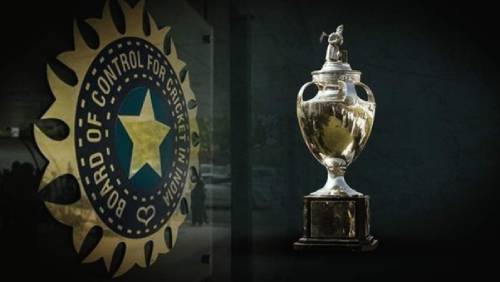The IPL auction saw some extravagant money being spent. The lives of a few players changed in a matter of seconds. IPL has always been perceived as this money-making machine. The rich players and the board keep getting richer. The money gets spent on Indian cricket and infrastructure. But does the BCCI ensure that the domestic structure is in the pink of health?
The stats tell a story:
In 2012, the Board of Control of Cricket in India served up an act of benevolence. They drove a one-time benefit scheme campaign. As part of this initiative, they gave away Rs 30 lakh to Indian cricketers who have played 100 or more first-class games. They gave away Rs 25 lakhs to those who played between 75 and 99 matches.
No doubt that it was an act of kindness that was duly appreciated. But let’s look at the contrast it serves with the IPL. The lowest base price for a player at the IPL auction is Rs 20 lakhs. The BCCI announced that they will not be holding the Ranji Trophy this year due to Covid-19 related logistical challenges.
The only domestic competition held thus far was the Syed Mushtaq Ali Trophy (T20). BCCI it seems will only be able to host the Vijay Hazare Trophy (50-over cup or men), Vinoo Mankad Trophy (U-19) men, and one-day competition for women.
It seems a fair call since 38 teams take part in Ranji Trophy. To create a bio-security bubble for almost two months for such a volume of players will be painstaking. But the call to not hold the Ranji Trophy has again brought financial uncertainty into play. Not every domestic player has a job, an IPL contract, or a supportive parent or spouse to help them see through the lean financial phase.
Ranji Trophy financial numbers:
BCCI pays Ranji Trophy players Rs 35,000 per day per game. That means Rs 1.4 lakhs per match. Now if a player makes it to the playing XI for all games in the league stage, he stands to gain approximately Rs 12-13 lakhs. The salary cap increases if the team qualifies for the knockouts.
Understandably, youngsters without IPL contracts were hoping to use the money for their expenses. But for senior pros who have no chance of getting an IPL contract or an India call-up at this stage; This money becomes even more valuable. They are hoping that BCCI will compensate them in some form or other. There have been some talks in the BCCI circles in that regard but nothing concrete has been announced.
Stake-holders in the domestic structure:
While players remain the biggest stake-holders, there are others too who have suffered a financial hit. For example, the umpires, who can make a maximum of Rs 40,000 per day during the Ranji Trophy. The umpires are divided into four groups and umpires from A, and B groups generally get to officiate Ranji matches.
There are 20 umpires in Group A, and 25 in Group B. Group A umpires get Rs 40,000 per day while Group B umpires get Rs 30,000 per day. At times even toppers from Group C get to officiate Ranji games. On average, a top umpire gets 8-9 Ranji Trophy games a season and that adds up to a loss of Rs 13-14 lakh this season. Like the players, umpires are also hoping that the BCCI would compensate for the loss.
Scorers and match referees have been affected too:
The third most important person during a cricket game is the scorer. They are such an underrated component of the whole circle. These men and women earn Rs 10,000 per day during a domestic game. During the Ranji Trophy season, they expect to get three games. Thus they are staring at a loss of anything between Rs 80,000 to Rs 1.20 lakhs just from the cancelled Ranji season.
Then, there are match referees, coaches, support staff like trainers and physios, commentators, and groundsmen/women who depend on the earnings from the domestic season. Some of these groups are looking towards BCCI for help which might be on its way sooner rather than later.
Domestic players have central contracts in other countries:
Domestic players getting central contracts is a norm worldwide, be it Bangladesh, West Indies, or Australia. In Bangladesh, the national board pays its domestic first-class cricketers a monthly salary. The Counties in England offer a separate red-ball and white-ball contract. In Australia, some states are offering central contracts to women cricketers too.
BCCI has the resources to keep the domestic structure healthy:
It will be foolish to assume that BCCI doesn’t have money to look after players in 38 teams across gender and age. BCCI has a hefty TV rights deal both for international cricket and the IPL. It also earns handsomely from various other sources such as kit sponsorship and selling in-stadia advertisement rights. State associations get their annual share from the BCCI kitty but unfortunately, only a small fraction of that amount gets spent on cricketing activities.
The pandemic potentially has given the BCCI an opportunity to help all the stake-holders. It can not only lift them out of the current predicament but also secure them against such calamities in the future.



